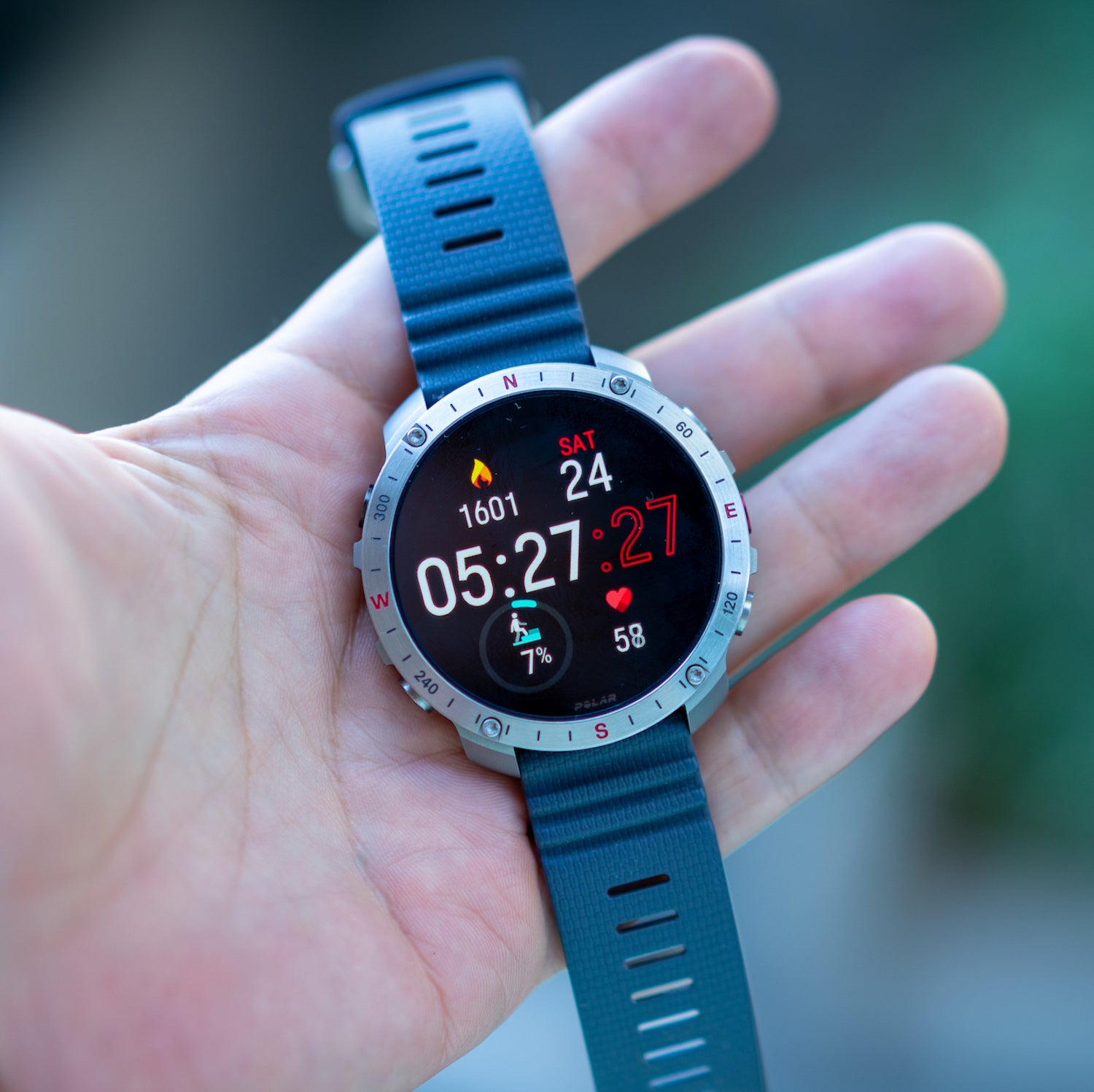Polar has long made some of the more affordable sports/adventure watches, but this year the Finnish company decided to swing for the fences and make a true flagship watch. It’s Polar’s most expensive wearable—starting at $750—but the has the nicest hardware ever featured in one of its watches. It’s just too bad the software can’t keep up.
The is being marketed as a “Premium Outdoor Watch.” You might think of it as a direct competitor to line. It features a 1.39-inch touchscreen display with a generous 454 x 454-pixel resolution. The case and bezel are made of sturdy and attractive stainless steel, and the screen is a an ultra-hard sapphire glass, which is known for its strength and scratch resistance. It’s water resistant to 100 meters and it features Polar’s latest for heart rate monitoring, pulse oximetry, and even skin temperature. Over three months, I put the watch through its paces running, surfing, hiking, swimming, and wearing it 24/7.
Here’s what I found.

Polar Grit X2 Pro Review
Weight: 2.8 oz (including wristband)
Display size: 1.39 in
Display resolution: 454 × 454
If you buy through our links, we may earn an affiliate commission. This supports our mission to get more people active and outside. Learn more.
Polar Grit X2 Pro at a Glance
Pros
- Good-looking hardware
- Accurate GPS tracking
- Excellent battery life
- Downloadable maps for offline use
- Comfortable to wear
Cons
- Menus and features aren’t intuitive to navigate
- Software has some major bugs
- Lacks powerful multisport functionality
- Expensive
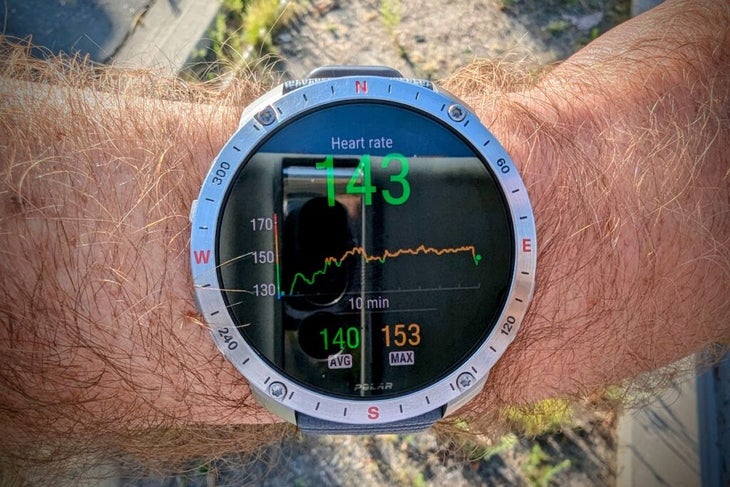
Aesthetics
The watch comes together in a nice-looking package. The metal bezel looks absolutely great whether you’re wearing it on a trail or at a fancy dinner, and I’ve had zero issues with scratching despite scrambling over boulders and haphazardly throwing it into a backpack filled with other metal electronics. The screen has a high maximum brightness, with excellent contrast, and it’s easy to read even in blazing direct sunlight. You can choose low or medium brightness if you want to save battery-life, and you can also choose between having the watch face constantly illuminated or for it to just come on when you lift up your wrist to look at it or touch a button (which will save even more battery). Personally, I kept it in high brightness and kept “Display always off” turned off. Polar has a somewhat limited amount of watch faces to choose from (and you can’t download more, unlike with Garmin), but they’re attractive and they can be customized to display the information that’s most important to you at a glance.
User Experience
From the home screen, swiping to the left or right brings you to various widgets for your activity, sleep, cardio load, week at a glance, today’s training suggestions, navigation, sunrise/sunset times, weather, and media controls. These are generally well thought-out and display the information in easy-to-read layouts. There are even explainers for some of the metrics, which can be helpful because there’s a lot to sort through. The watch can give you suggestions for training or recovery, based on your sleep and the workouts you’ve had. It will also tell you if you’re overtraining or undertraining, and the workout suggestions will be specifically tailored to you. (Though, the accuracy of these kinds of technologies is still hotly debated.) I was testing this watch as I was just getting back into running after a knee injury. The workouts it suggested tended to be lower intensity than I probably would have chosen for myself, but it helped me get back on the horse without re-injuring myself.
I’m not a big fan of the way the buttons are configured. The watch features three buttons on the right side and two on the left, but I found it to be a bit unintuitive. For example, rather than the common start/stop button for activities, you have to start on the right middle, and stop on the left bottom. Pressing once pauses the activity. If you want to stop it you have to press and hold for another three seconds. I often found myself hitting the wrong button during activities, which could be frustrating.
The menu layout also took some getting used to, as did discerning which features are accessible via watch. Sometimes, I found myself zeroing in on the correct feature, only to have the watch tell me the thing you seek can only be found on the app, which sent me on another quest. Unfortunately, the app isn’t very intuitive, either, and overall you’re left with fewer options for customization than you get with Garmin or Suunto watches.
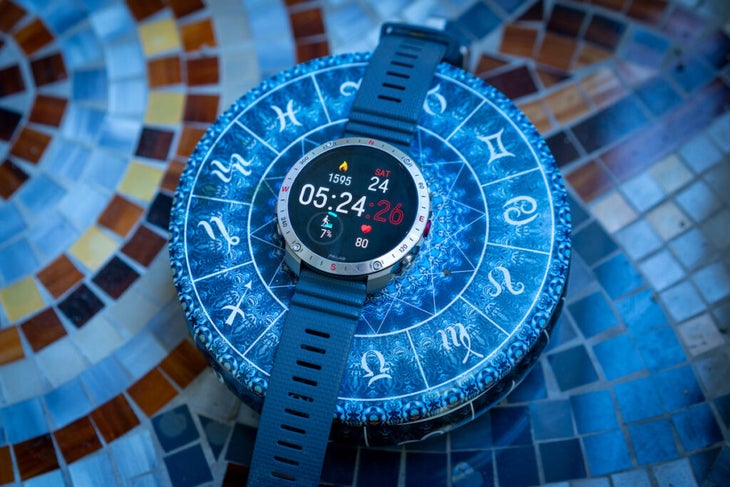
Activity Tracking
When it comes to activities, the watch can store 20 different sport types at a time, which sounds like plenty, but I found this to be a bit misleading. A lot of the activities have the same exact data fields, even when it doesn’t make any sense. Surfing, for example, includes elevation data fields. Why? It would be really nice if it could recognize the difference between when you’re riding a wave and when you’re paddling back out and give you different metrics on it, which the Apple Watch and both do. In fact, both of those watches will sync with Surfline which will allow you to easily find videos of you surfing (if you’re at a spot with a webcam). It also just doesn’t have as many activities to choose from as those competitors, which have more than 80.
That being said, if you’re running, specifically, the watch is really quite good. You can easily flip through current stats, maps, and music controls, and it even has some unique features such as , making it a sort of wrist-worn power meter. Running Power is a mechanical work rate, measured in watts, similar to what you’d get on a power meter on a bike. I also found Polar’s recommended workouts to be good, and the coaching (which comes through your phone) was helpful, too, which can help you set your pace and manage intervals based on time or distance. One really nice feature is that you can use the watch as a Bluetooth Heart Rate Monitor (HRM) and have it send live data to other apps or devices, like Strava, MapMyRun, or stationary bikes or treadmills.
TheThe watch’s heart rate monitoring feature also performed admirably, though not perfectly. I compared it on several workouts to my trusty Wahoo Trackr HRM Chest Strap and most of the time it matched pretty evenly, putting it on the upper end of par with other smartwatches I’ve tested.
Navigation
One of Polar Grit X2 Pro’s other banner features is navigation. The map is bright and colorful, and it’s easy to use your fingers to scroll around and zoom. It comes pre-loaded with very basic maps of North America, but you can download detailed maps in more specific regions through the Polar website. You just have to plug your watch into your computer to transfer it over.
You can download routes through Komoot and Strava Routes which work when you’re offline, which is convenient. But when using navigation modes this watch wants you to calibrate, and then re-calibrate the compass over and over again. This is liable to happen not just every hike, but sometimes multiple times per hike, and it involves twisting your wrist around into various uncomfortable positions until you have appeased the magnetic demons that live inside. Most other adventure watches do not ask you to do this ever, so this is definitely an oddity. (It’s also a known issue with the Grit X2 Pro, which means a software fix may be on the way.)
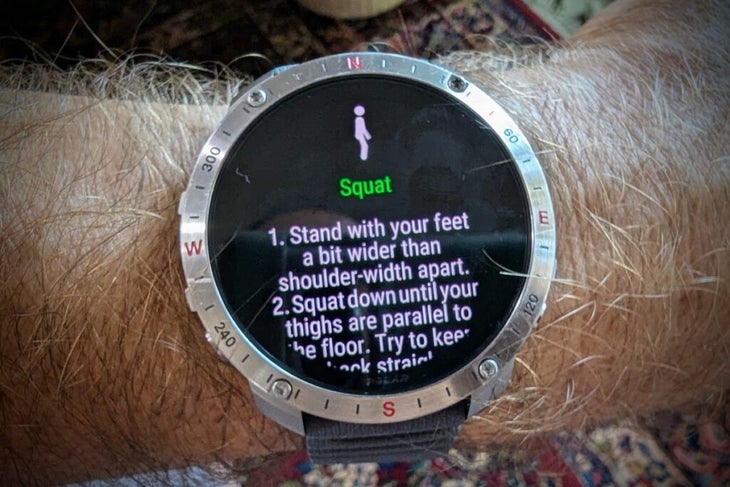
Guided Workouts
The Polar Grit X2 Pro doesn’t support importing workouts from apps like . That’s a pretty big deal for more competitive athletes, especially those working with coaches. You can export your workouts to TrainingPeaks and Strava after you’re done, but you can’t import them. Both Garmin and Apple Watches make this pretty seamless. Polar does have some of its own workouts pre-loaded that it kind of guides you through with animations, but if you need instructions it takes more button presses to get to the relevant info than you would think, meanwhile the timer keeps going. The animations aren’t as nuanced as those you find on Garmin or Fitbit watches, either. When in activity tracking, you’re limited to four data fields per page (e.g. elapsed time, distance, pace, heart rate, etc), which is fewer than most watches I’ve tested (the Epix allows up to seven). The numbers are large and easily visible, but I prefer information density to scrolling through pages while I’m trying to keep my pace up.
Storage and Battery Life
The watch is also somewhat more limited as an autonomous gadget than a lot of other flagship models. For example, despite the watch having 32GB of storage, you can’t download music to it and play it directly through a paired set of earbuds, which is unfortunate. That said, if you’re playing music off your phone the Grit X2 Pro does allow you to play/pause and skip tracks from your wrist, which is handy. Unlike other smartwatches, there’s also no mobile payment option—a bummer if you get caught out on a long run and need to grab a bite to eat or a taxi home.
I’m glad to say that battery life is excellent on this Grit X2 Pro. I kept the screen in high brightness and in the gesture-based wake-up mode (i.e. the screen isn’t always on, but it turns on when you raise your wrist or press a button), and doing that allowed me to average 10 days of battery life, which squares with Polar’s claims. Of course, that’s best-case-scenario. If you’re doing a lot of activities that use the GPS your battery life will drop considerably, but still, here it performed at least as well as my .
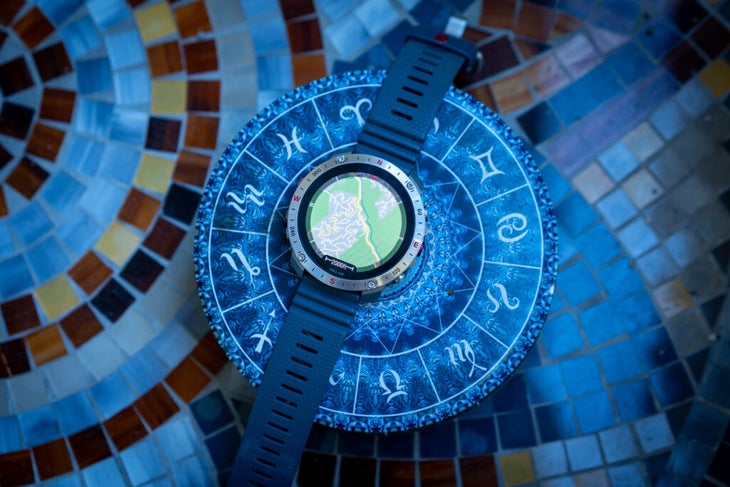
Polar Grit X2 Pro: Who Is It For?
Ultimately, this is a watch that I really wanted to like, and I did like it enough to wear it for three months, but I never came to love it, and the little annoyances never stopped being annoying. In my opinion, the UI and overall user experience falls short of other premium watches like the Garmin Fenix or Epix. And at $750 (or $870 for the that includes a leather wristband), I found the cost a little hard to stomach.
The hardware is really fantastic, however, and the watch is comfortable to wear. If you’re the kind of user who puts aesthetics first, want basic smartwatch functionality in an attractive package, and don’t mind the high price tag, this could make sense for you. But if you tend to prioritize function over fashion—and want even more features at a lower cost—you may want to look elsewhere.


